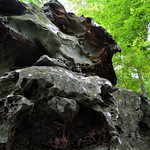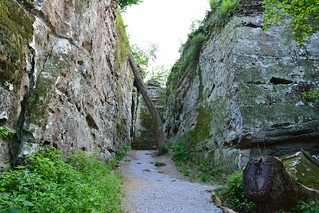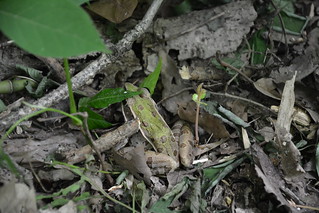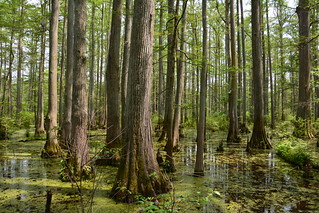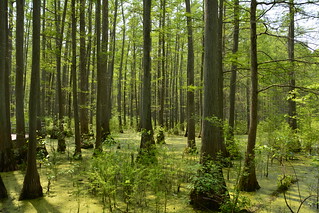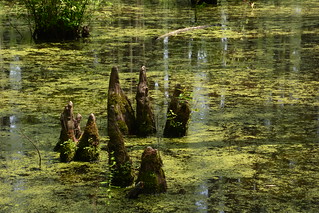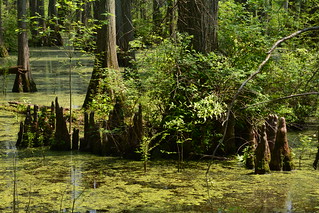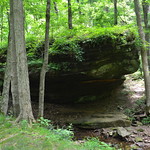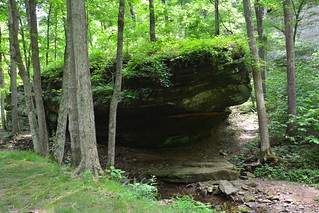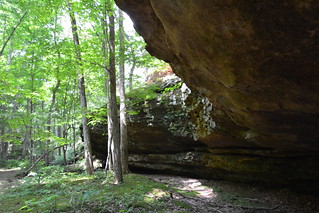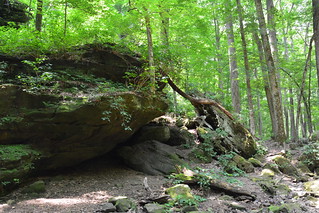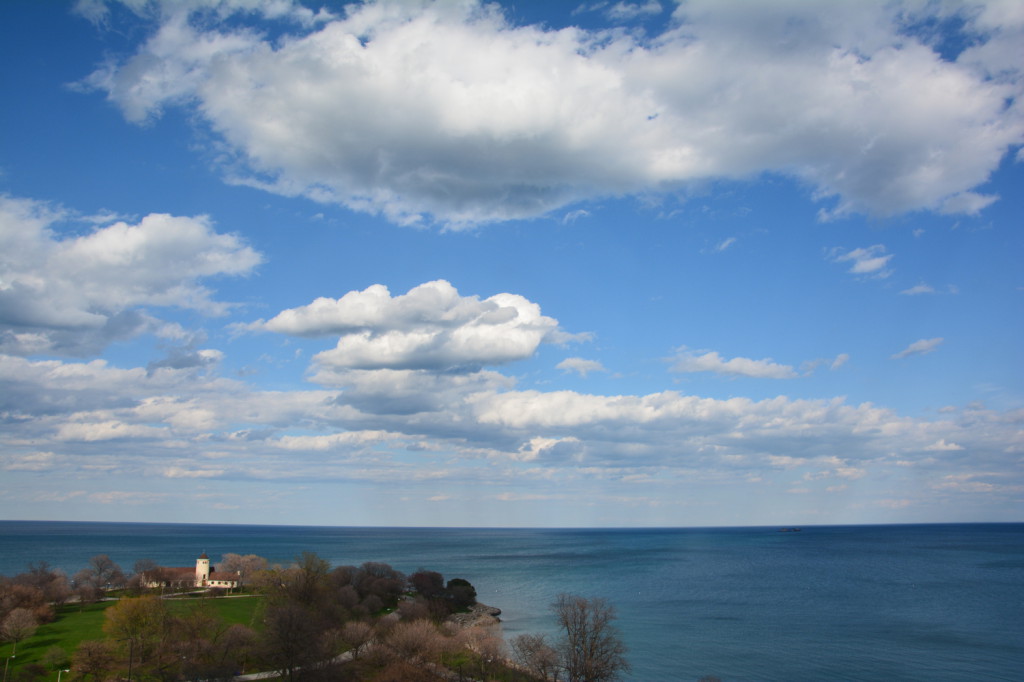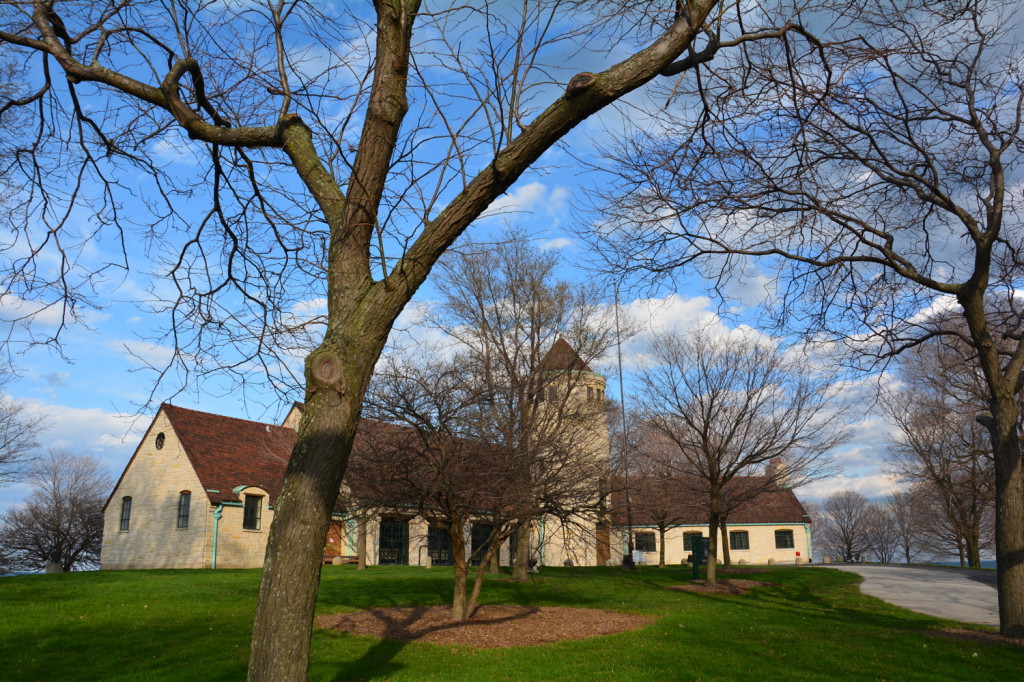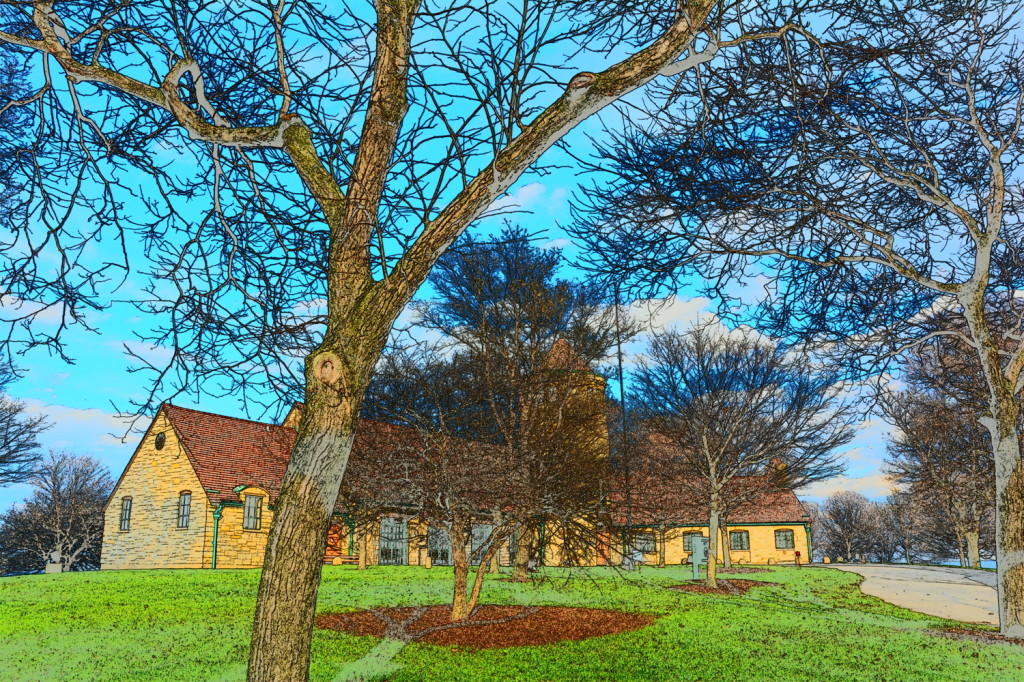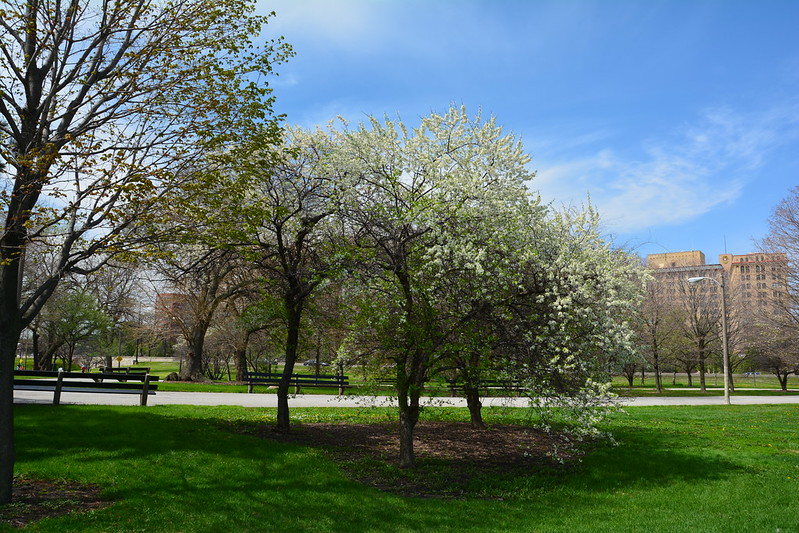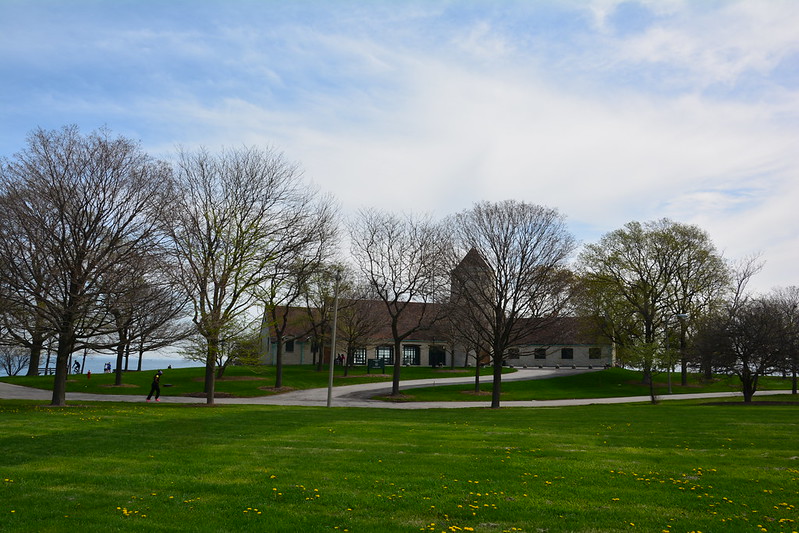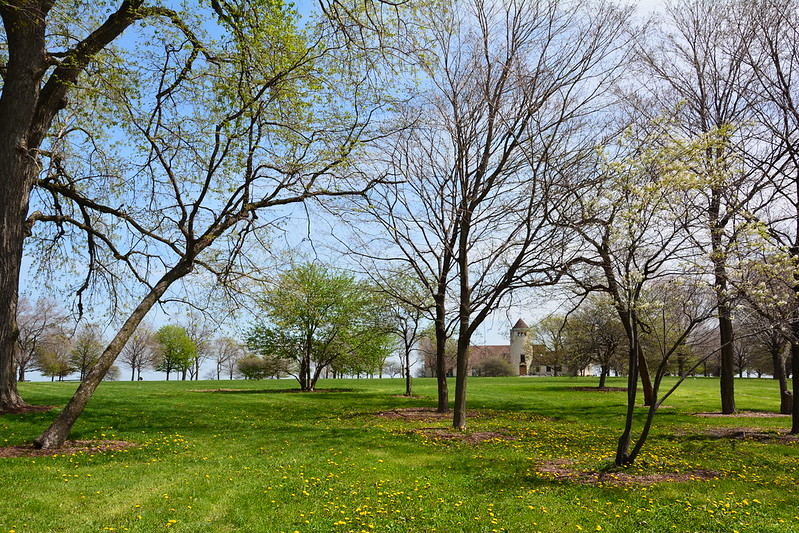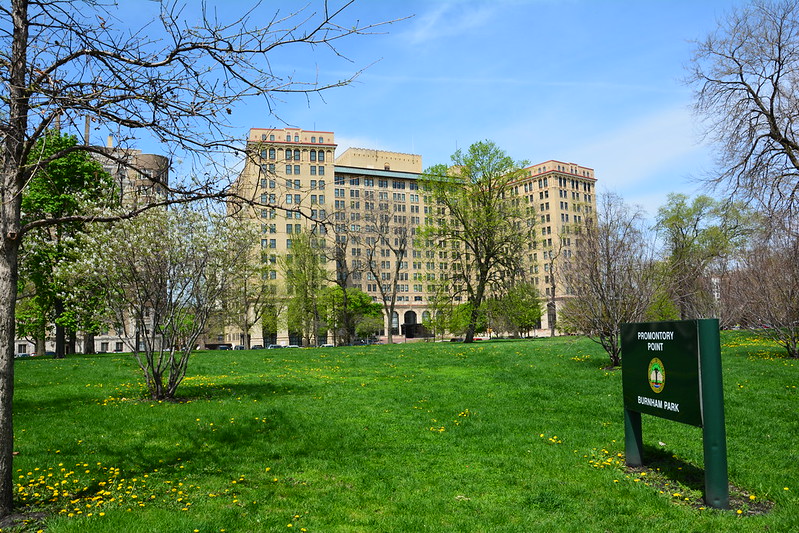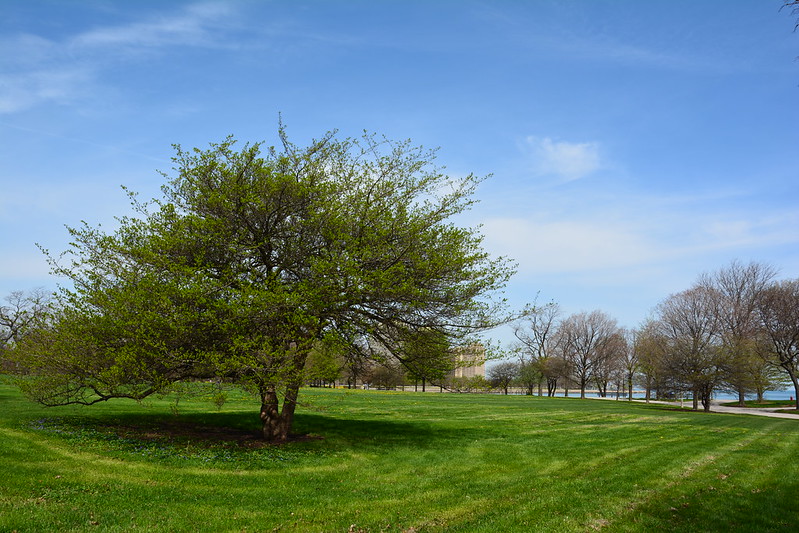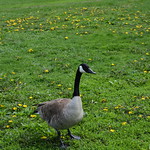Champaign to Anna to Giant City State Park to Heron Pond to Fern Clyffe State Park, then home
May 23, 2014, late evening
J. and I set out for a brief return to Shawnee National Forest and the Cache River. Other than visiting Heron Pond, I didn’t have a plan.
We made it to Champaign before stopping. I forgot that Champaign is a few miles east of I57, so we overshot it.
After breakfast at Le Peep, we were on the road again. We had to bypass some of last year’s distractions, like Amish Arcola and Rend Lake. We did leave the expressway for Mattoon and a quick stop at a place I hate to leave: Common Grounds. Closer to our destination, in Mount Vernon we detoured to a Toyota dealer and a car parts store to look at the malfunctioning lower glove compartment. We also took a break at the Post Oak rest area, which with its bridge and trees is scenic and soothing. I remembered it from last year.

This time we focused on the more civilized western part of Shawnee, with home base at the Davie School Inn. Built in 1910, this elementary school is now a distinctive and very comfortable bed and breakfast — if the sight of a student desk and other holdovers from the school don’t traumatize you with memories.

Our host described Anna, which we’d been to before, as “just like Mayberry” (that is, there’s no need to freak out if you leave your car unlocked for a few minutes — or more).
Giant City State Park
May 24, 2014
I’d been intrigued by the name and description of Giant City State Park. As it was already late afternoon, it was nearby, and our host recommended the park’s lodge for dinner, it seemed like a great place to use the daylight we had left. On the way, we stopped in Makanda at what in any other place would be called a strip mall, only this was a rustic building carved into a hillside, and its stores were mostly local art and other tourist shops, with an ice cream joint in the middle. I loved its charming hillside location and unpolished design. You realize how sterile urban and suburban big box and brand shopping is when you see something like this.

We inadvertently took a hilly, twisty back way into Giant City State Park. These aren’t words I usually associate with the flat, bland Illinois landscape, so it’s like being in another world.
Giant City State Park has numerous trails, and I tried to find the one that was popular and not too difficult. (There may be a correlation.) After wandering around a while, we came upon the Giant City Nature Trail head, past a picnic area overrun with happy, screaming children.
This didn’t sound like something I couldn’t handle (although I wouldn’t be sure until the end). We were lucky because we weren’t swarmed by mosquitoes.
The “giants” of Giant City are huge rocks with “streets” between them, the natural antonym of a model scale urban canyon.
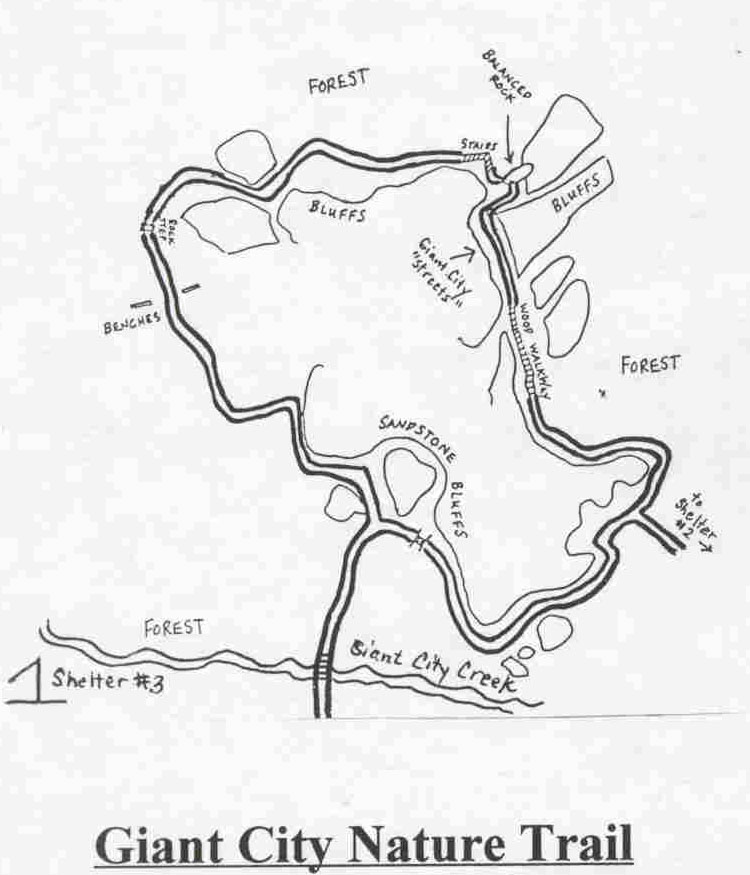
By far the most popular trail at Giant City, this 1 mile trail is home to the famous “streets” of Giant City. You’ll walk on a mulched trail with wooden walkways at difficult spots. There are some strenuous uphill portions on this trail. Take this trail to view a diversity of plant habitats from creek bottomland to dry blufftop. This is also a promising trail for seeing the largest woodpecker in the United States, the pileated woodpecker.
Illinois Department of Natural Resources
The giants are beautiful and impressive, and we would have stayed longer if we weren’t running out of daylight for photos and time to get to the lodge for dinner before it closed. After we passed the Giant City “streets,” I was even nervous that we wouldn’t be back to the trail head by dark — I wasn’t prepared with this convenient and easy-to-follow map.
I moved as quickly as I could over the more strenuous uphill portions and somewhat rougher terrain. Earlier we’d seen a woman who was in the final stages of pregnancy, and I’d marveled at first that she was going to attempt the trail, but then her family detoured back to the parking lot, so they saw only the sandstone bluffs.
When we got back to the trail head, I noticed the sign said Fat Man Squeeze was closed due to snake activity. I realized later we hadn’t inadvertently disrupted the snakes. Even if we had spotted Fat Man’s Squeeze (we weren’t sure), from the looks of the photos it would have been a miracle if I could have gotten even my arm through. For a lot of reasons (mainly the distance between us), the snakes will remain safe from me.
Like Starved Rock Lodge, Giant City Lodge was a CCC project and has a similar rustic, roughly timbered feel (although the construction style may be different — I’m no expert). It’s decorated with specimens of various taxa that have been treated by a taxidermist — deer, fish, ducks, etc. Food and drink were welcome after the long, tiring day, and so was the classroom with the Jacuzzi shower and bath at Davie School Inn.
Heron Pond
May 25, 2014
After a big breakfast, we set out for the Barkhausen-Cache River Wetlands Center to get better directions than I had for Heron Pond, although on the way we spotted a few signs pointing to the pond. I’m glad we stopped at the center not only because having directions helped us to find it (what you’re supposed to pass through, how far to go) but also because for a little while we could watch the barn swallows and hummingbirds forage.
I’m not sure where we went wrong last year (I think we just gave up), but although Heron Pond is a little out of the way, with the signs and the directions it’s not hard to find. The final approach, however, is down a narrow, single-lane gravel road whose shoulders have been cut away so there’s a good drop on either side with not much room for error. We were in luck; we had just started down it when a car came toward us, so we didn’t have far to back up to get to a point where we could let them pass. I wonder if the road is being made wider, but I can’t say.
The road is long enough to make you wonder if you somehow missed the pond but eventually you do come to a crude parking area, and the trail head is clearly marked. The trail itself is easy, and we stopped to take photos at several spots that didn’t make me think of what I was looking for, but were scenic on their own. The sign at the trail head was a good clue, as was the bridge we crossed soon after starting out — I’d seen it in a video of Heron Pond.
Although we didn’t see wildlife galore, we did occasionally see movement, which in one case gave away the location of a lovely leopard frog. I’m assuming he’s of the southern variety.
While the first part of the trail is more open and the water looks like a conventional creek (or “crick”), soon we started seeing swampy areas to the left, with denser vegetation. By this time, though, the fatigue from the up-and-down Giant City trail was hitting me hard. The experience helped me understand the descriptions given by people with disease-related fatigue. My legs felt like heavy dead weights that were getting harder and harder to move, even when walking on level, even surfaces. As at Lusk Creek Canyon the year before, I told J. I couldn’t go any farther if I were to be able to make it back to the car. Also as at Lusk Creek Canyon, when we hit a signpost (in this case a fork), he left me so he could see how far off the destination was. It turns out that Heron Pond wasn’t much farther, although that is relative when you’re fatigued and hurt all over. I plodded along until we finally reached the Heron Pond boardwalk, where adorable anoles were one sign that we weren’t in northern Illinois anymore.
As one woman passed us, she asked if we’d seen the cottonmouth (copperhead?) under a tree we’d passed. No! I’m disappointed we missed it — I’d been hoping to see a snake, although last year we’d been told they’re elusive.
Years ago, I’d read Marjorie Zapf’s Mystery of the Great Swamp, set in the Okefenokee of 50 to 60 years ago. n the hot, humid air that would be more typical of summer than spring in northern Illinois, Heron Pond looks like something you might find in Georgia — a tiny, northern, less wild Okefenokee. In the book, though, you see the world from Jeb’s eyes as he poles a canoe through trees covered with Spanish moss. When I read The Mystery of the Great Swamp as a child, all of it — the swamp, the canoe, the venomous snakes dangling from the trees, the birds, the dappled lighting and the deep shadows, the profound stillness and subtle sounds as the animals carried on with life — all of this was deliciously alien to my imaginative child-self. I was young enough to think I was Jeb, poling through the silent but not still Okefenokee, in search of answers to questions no adult understood or admitted. I didn’t love the ending because it wasn’t an ending for just Jeb or just me; it felt like an end to something bigger and critical to life itself — the unknown. Without mystery in life, what’s left?
Heron Pond isn’t large or remote enough to harbor the Great Swamp’s mystery — nor, of course, is the Great Swamp. It’s lovely, peaceful, and otherworldly, though, especially after the hours spent passing through central Illinois, if you can imagine the other tourists and, in my case, the pain and fatigue away.

Despite the humid heat and the sun, we stayed a while , then J. wanted to head toward the state champion cherrybark oak. So did I. By this time, my legs felt like they weighed one hundred pounds each, and every step was a painful effort — so painful that I broke into tears and became and even more miserable travel companion. At least I got a lovely photo of the champion cherrybark oak and for a moment I was Jeb — in a 52-year-old woman’s body, chronic condition and all.
Before we passed the Wetlands Center on the way back, we picked up a high-profile, slow-moving farm vehicle in front of us. As he headed toward a large turtle parked in the middle of the lane, I cringed, expecting to see the big guy flattened. The farm vehicle, however, passed over it, so high off the ground on its giant wheels that the turtle was in no danger as long as it stayed in the middle. After the vehicle passed, the turtle, which had been hunkered down, stood as high on its legs at it could and began to hightail it across the road. I’ve never seen such long legs on a turtle. Later my hair stylist pointed out what should have been obvious to me — the turtle was trying to keep its body as far from the hot pavement as it could. I hope it made it to a nice cool spot nearby. As for the vehicle, after a convenience store stop, where we had lost it, it found us again, but finally it pulled off the road at a farmhouse a mile or two away.
Further along the road what I could swear was an otter crossed in front of us. It had the low profile and short legs of an otter and walked very differently from the only beaver I’ve seen walking (in Kankakee River State Park).
The plan had been to squeeze in another activity as it was not much past 4, and there would be daylight for a while. I didn’t have much left, however. After a rest, we went to El Jalapeño in Anna for dinner. By this time, beautiful clouds had built up, and thunder rumbled in the air, but not much came of the threat except the opportunity to relax all the sore muscles and stiff joints.
Fern Clyffe State Park
May 26, 2014
Monday (Memorial Day) came, and it was already time to return — after another hearty breakfast, of course. Before we left the Jonesboro area, we stopped at Hidden Lake Bed and Breakfast and learned that they had indeed sold the property in two parcels — the main building as a private home, and the guest house as an inn — and that they were getting to move within a month or two. I’m glad I was able to enjoy the amazing breakfast room overlooking the array of bird feeders and a brief walk around the hidden lake last year.
Because time was short, we made only a quick visit to Fern Clyffe State Park, seeing a dead coyote along the way. At Fern Clyffe, the waterfall that had not been running on my previous visit in late May 2013 was not running. One of visitors, who lives nearby, helpfully informed us that after a good rain it had been running the past weekend. Curses.
The rest of the drive back was uneventful. We stopped in Roger Ebert’s university town, Champaign, for a second Memorial Day visit to Café Kopi, another comfortable place that’s hard to leave. By the time we pulled over at the Main Line Station rest area, storm clouds had developed around us, just like last year at the same place. This was the third beautiful trip that ended in rainy or stormy weather — almost as if the weather were trying to brace us for the return to work and reality, to bring us back from the mystery of the great swamp to the banality of everyday life.

